
If I were to sum up, in one word, how James Frederick has managed to create his sailing life, I’d say “resourcefully.” The 49-year-old seasoned sailor and YouTube content creator has restored his vintage 1965 Alberg 30 sloop, Triteia, all while living aboard, exploring the world and adhering to a tight budget. Add a healthy dose of dedication and ingenuity, and James proves it’s possible. So it’s just a matter of how?
Working as an art handler may seem a long way from the world of bluewater cruising. James had found his love of sailing back in 2014, and fitted it in, where he could, alongside working for art galleries. He finally found the boat that would take him around the world in 2017 and gained his Master Captain License from the United States Coast Guard in 2019. To earn extra income where he could, he undertook boat deliveries. Fortunately, one gallery he worked for understood James’ passion for the sea.
“Both owners were sailors themselves,” explains James. “One had done the Transpac race from San Francisco to Hawaii. The owners were happy for me to take any time off if it was sailing-related. They also had a vintage Cheoy Lee sailboat they let me skipper and take clients and artists out on. It was a great boost to my sailing journey.”
CHOOSING WISELY
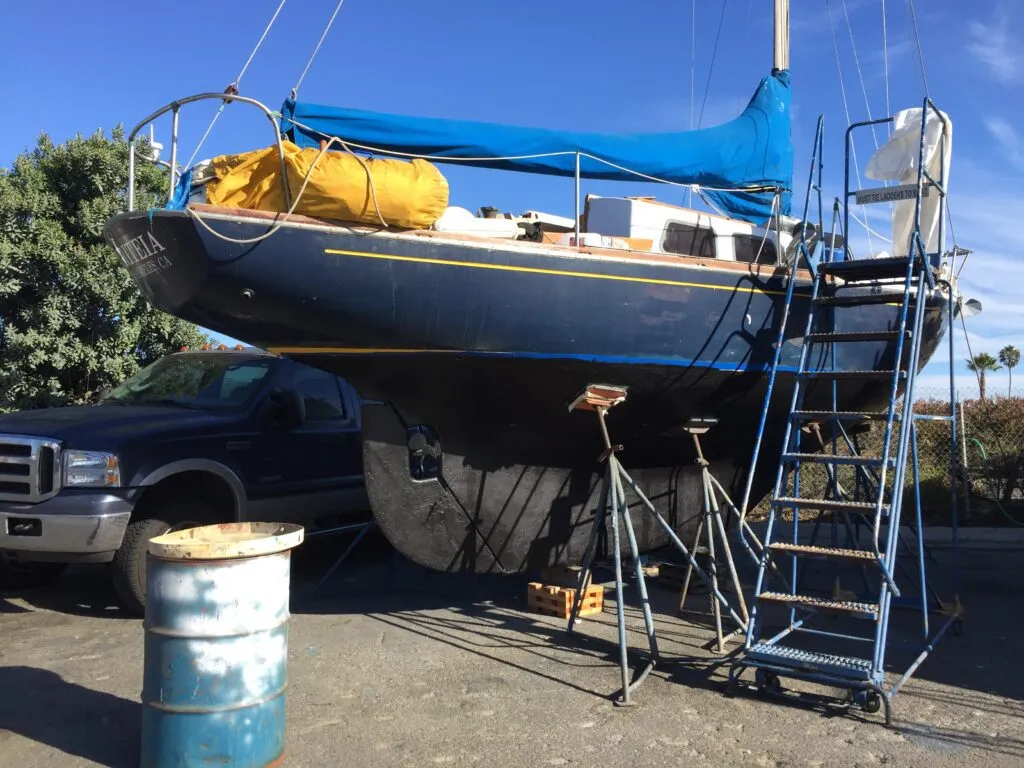
When James set out to find the perfect sailboat for his adventure, he had very specific criteria. “I knew I wanted a full-keel (encapsulated) boat that was solid fiberglass and made before 1972,” he says. After this time, James explains, boats became much thinner due to the longevity of the new fibreglass material. For James, the boat also needed to be 30 ft. or smaller, so it was affordable to maintain over the long term. “The Alberg 30 checked all those boxes,” he says. “It had a robust build and classic design.”
ASSESSING THE SIZE OF THE BEAST
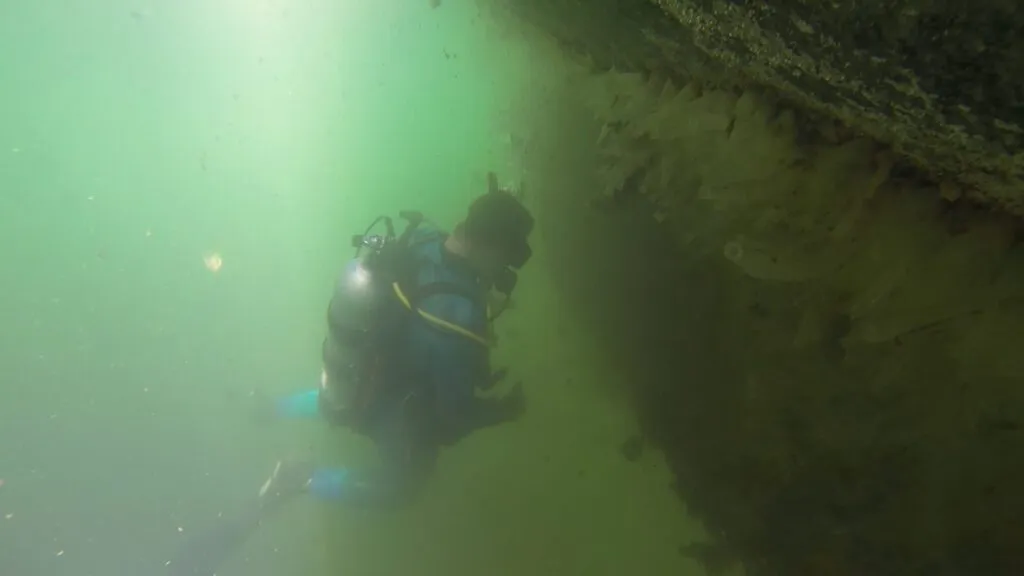
But it wasn’t all plain sailing. Upon purchasing Triteia for just $2,400, James was immediately faced with significant challenges. The boat had a seized engine, outdated wiring, mismatched sails (including the original 1965 mainsail), and the bottom of the hull was covered in 12 inches of marine growth. Pulling out the old engine and installing a newly rebuilt one was a major undertaking and the extensive growth on the hull was a major annoyance. “The boat hadn’t left the slip in six years. The growth was so thick it was like a small ecosystem,” James recalls.
BUDGETING FOR THE PROJECT

James approached each renovation challenge with a logical frame of mind and the luxury of time. He focused on resourcefulness rather than strict budgeting. “My budget was ‘Whatever it takes, as long as it takes,’” he says. His initial budget was $15,000. After purchasing the boat and spending $3,300 on a rebuilt Yanmar 2GM20F engine, he had $9,300 left for the refit. His steady approach allowed him to address urgent repairs first, while keeping future costs in mind. “Getting a rebuilt engine was much cheaper than spending $10,000-plus on a new Beta Marine engine, which is the route I would have gone down, had I had the budget for it.”
DIY SAVES—ALMOST EVERY TIME
With the exception of the engine replacement, James did all the renovation work himself, saving a substantial amount of money. His hands-on approach extended to other repairs and upgrades, significantly reducing overall costs. “I’ve never hired anyone other than for engine rebuilds. Doing the work yourself makes you more familiar with every aspect of the boat. If something breaks at sea, you’re better prepared to handle it,” James explains. The added benefit was that he was gaining a thorough understanding of his boat through the process.
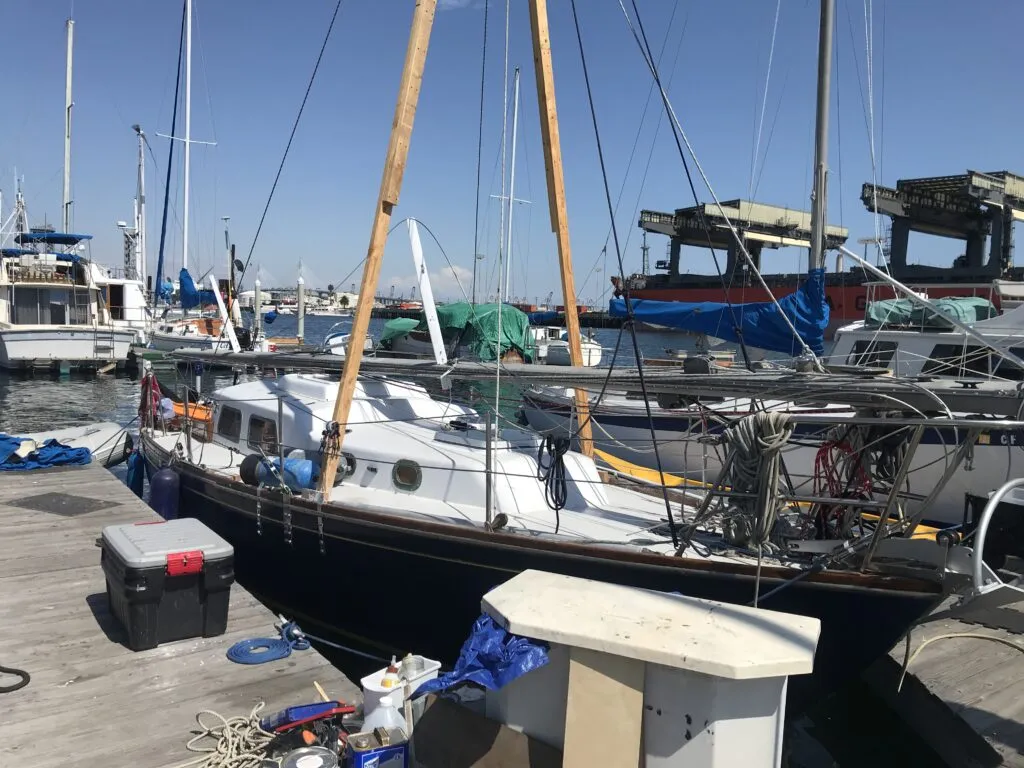
His resourcefulness extends to his DIY methods, too. He built an A-frame out of wood for stepping and de-stepping the mast. “Doing it yourself saved a lot of money compared to hiring a boatyard to get the job done,” he explains.
Unconventionally, James was able to live aboard while doing his own repairs and refits. “The yard where bought the boat was the cheapest marina slip in Southern California and was regularly said to be ‘where boats go to die.’” This meant more significant cost-savings.
THE ROLE OF RESEARCH
James relied heavily on online resources and manuals to guide his restoration process. “YouTube tutorials have been a lifesaver,” says James. But he offers a word of warning, advising others to “make sure to read through the comments for additional insights or corrections. I would advise those new to boat work to avoid internet forums. They often contain more opinions than practical advice and can sometimes be more harmful than helpful,” he cautions. Beyond YouTube, James says Nigel Calder’s Boatowners Mechanical and Electrical Manual was instrumental in providing the necessary technical knowledge during the refit.
OVERCOMING CHALLENGES
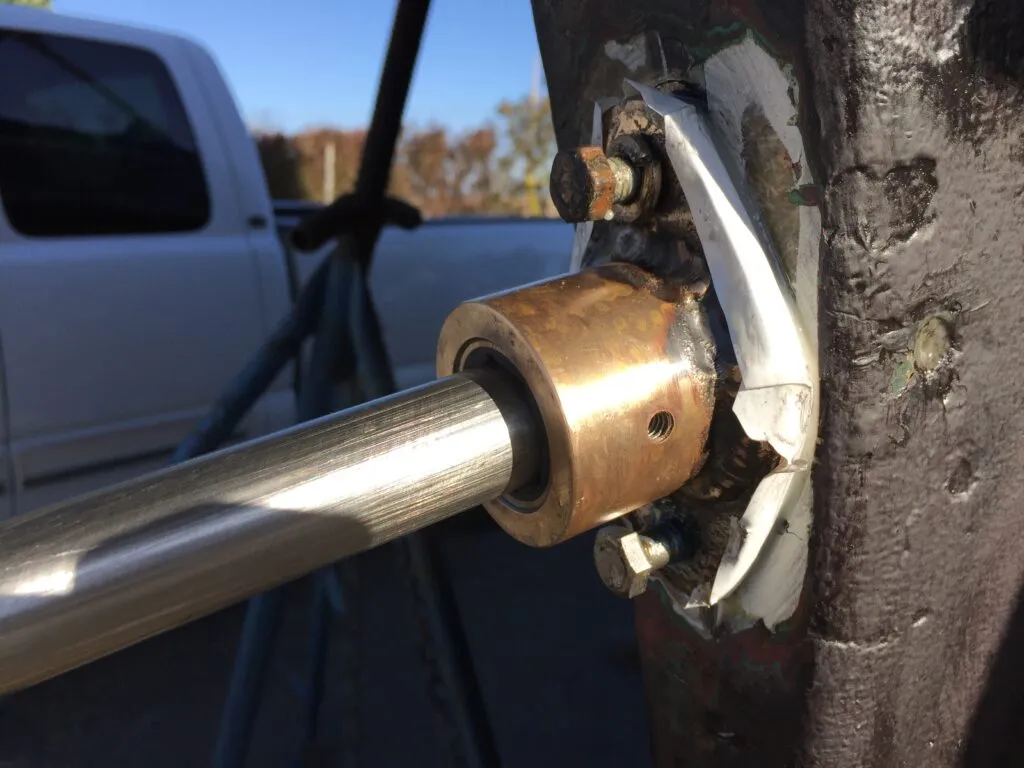
James is realistic about repairs, maintenance and the refit process. One notable challenge was during the haul-out process when he discovered that a previous owner had welded a bronze plate to the cutlass bearing, making a replacement impossible. “I had to have a custom bronze stern tube made, which extended the haul-out time and increased costs. I ended up having to drive back to Los Angeles to earn more money to cover the expenses,” James recounts.
For James, the most challenging aspect of the restoration was undoubtedly managing the finances. “Working pay check to pay check, I burned through my initial budget quickly. I prioritized essential parts and saved up for a year before scheduling the haul-out,” he explains. His methodical approach to purchasing parts and planning the refit ensured he could complete the project without cutting corners.
NEW CHALLENGES AT SEA
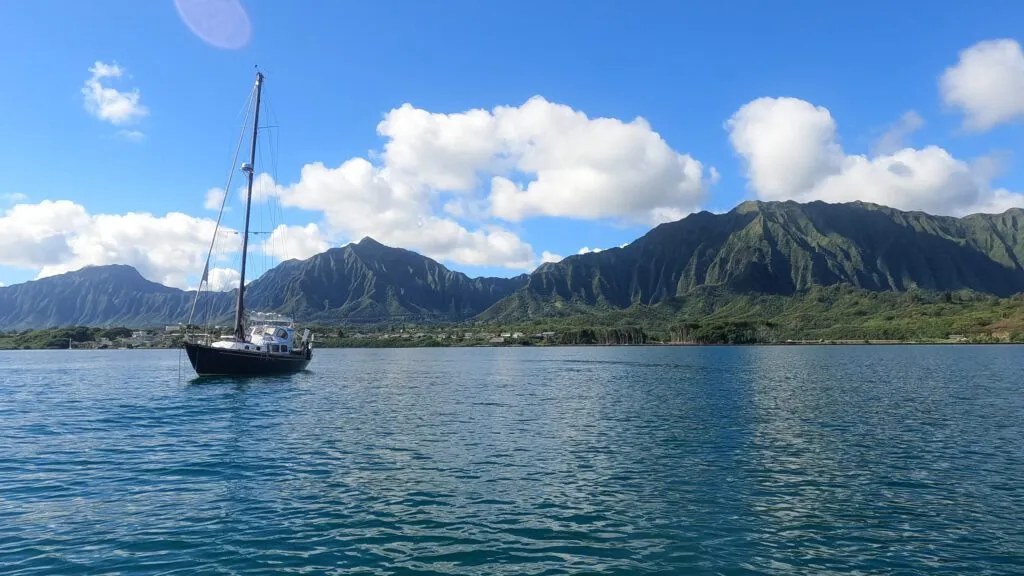
In 2021, James quit his job and departed Los Angeles onboard a fully refitted Triteia. Since then, he’s visited over 193 anchorages, and has covered over 13,600 nautical miles in the past three years, travelling to Hawaii, numerous Pacific Islands, New Zealand and Australia.
James funds his cruising through his weekly video uploads to his YouTube channel and with the support of his patrons. He has over 143,000 subscribers and receives equipment and additional funds through sponsors. “I reckon my general living expenses are around $1,500 to $2,000 per month,” says James. “That covers food and fuel and internet access. Of course there’s the one-off expenses when things go wrong. But I save heaps by living under anchor and generally not entering marinas. My partner Rhonda and I live a simple life—we don’t drink and we don’t have any outstanding debts.”
Finding affordable parts and materials has been a new challenge after leaving home shores. “Before you set off, the internet is a great resource for finding deals. Once you’re cruising, though, it’s much harder to find parts, and they’re rarely cheap,” James shares. Hence, he advises cruisers to stock up on essential items before setting sail to avoid the pitfalls of sourcing parts in remote locations.
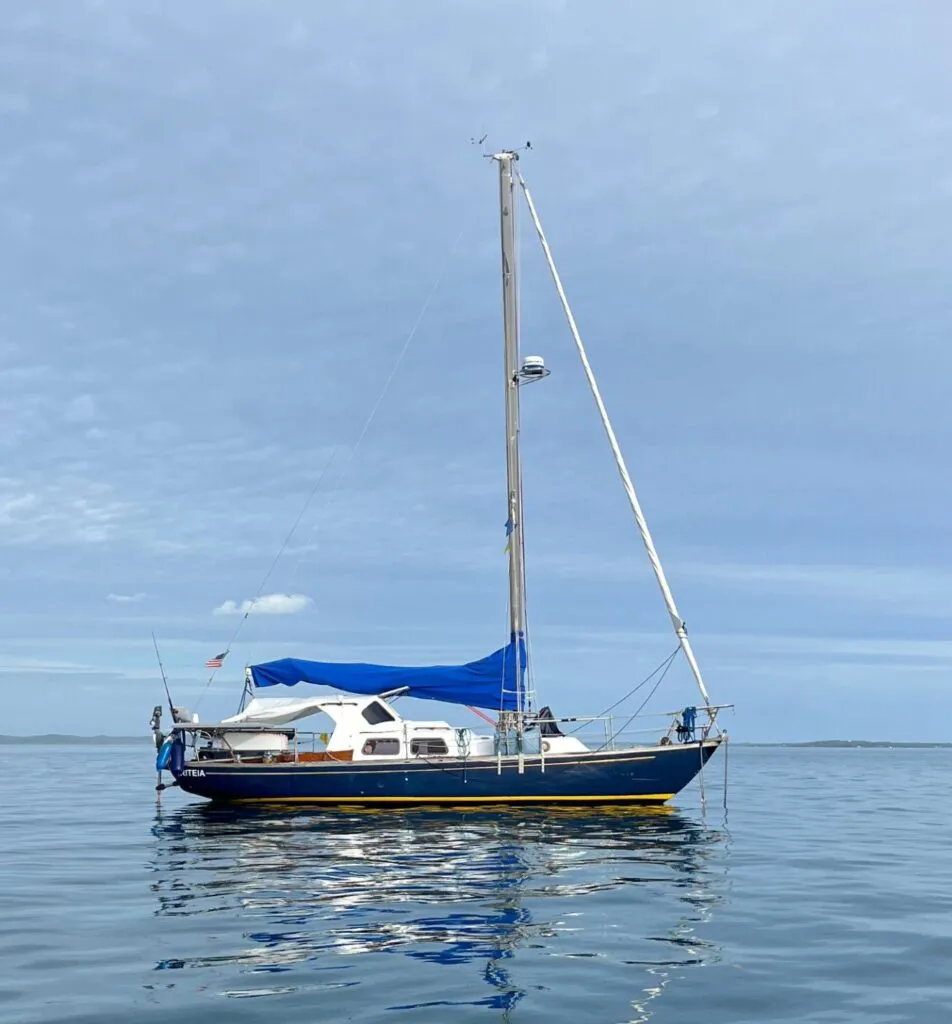
James is a member of the Ocean Cruising Club (OCC), which gives him access to port offices all over the world. “This is a great asset, as you don’t necessarily know when you’ll be at port, or equally, you don’t want to be stuck there for weeks waiting for a package to arrive,” he says. “For example, we’re currently anchored off Night Island (far north Queensland, Australia) on our way to Thursday Island and then on to Indonesia,” says James. “Today, we ordered a new prop for an outboard and had them send it to Thursday Island Post Office. Luckily the company we ordered from is really familiar with shipping to this location, but we have to get there within a certain amount of time, and that’s not always easy to predict with sailing. That’s by far the biggest difficulty in sourcing materials.”
WHAT’S NEXT?
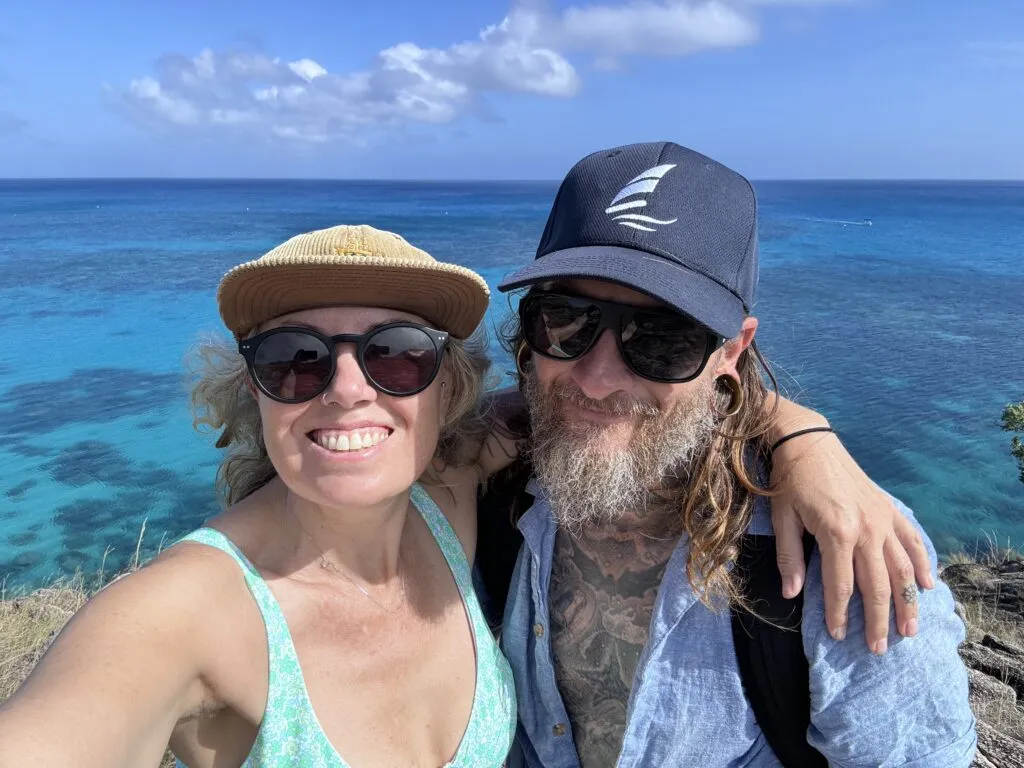
The next big project is upgrading the 400ah Dakota lithium battery bank to a 1000ah bank and installing a smart alternator. “Other than that, the boat has very little on the ‘to-do’ list,” he says. It’s perhaps time to sit back and smell the roses. Or at least, sail Triteia to Indonesia and see what happens from there. One thing is for sure: she’s a well-resourced vessel with a more than capable owner and crew.
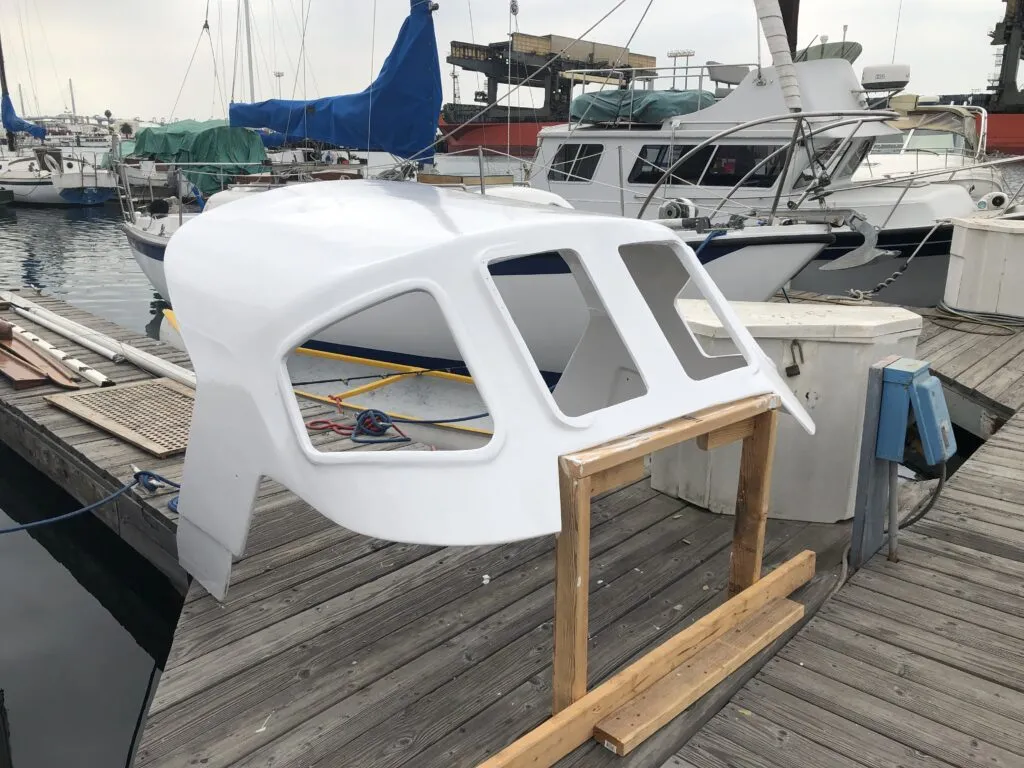
- Tool most useful for the refit? My battery-powered oscillating multitool is incredibly versatile and useful for a wide range of tasks onboard.
- Proudest moment with the renovation? Completing my hard dodger. It took me four months of hard work. Seeing it finished and installed was a major milestone for me. It was a tangible result of all the effort I had put into the project.
- Worst part about the refit? Being patient. It often feels like there is no light at the end of the tunnel, but the key is not letting yourself do jobs half way to speed them up. The sea will find any weakness in jobs that were not done correctly.
- Top tip for future renovators and restorers? If you buy a boat that needs a lot of work, don’t dive into major projects immediately. First, get the boat seaworthy and spend some time sailing her to understand her needs. This way, you’ll have a clearer picture of what’s essential and what can wait.
- Sailing heroes? My sailing heroes are from the 1950s, 1960s and 1970s, and they had nothing more than a sextant and a kerosene lamp if they were lucky: Hal and Margaret Roth, Miles and Beryl Smeeton, Lin and Larry Pardey and the Hiscocks.

































Hey Kathy, love Captain James. Thanks for bringing him to our reader’s attention.
Capt., thank you for all that you provide. It has been very inspiring. Cheers, fair winds and following seas my friend. Hope to shake your hand.
I recommend PS readers checkout his videos on sailing from LA to Hawaii.
Thanks for the kind comment Dana